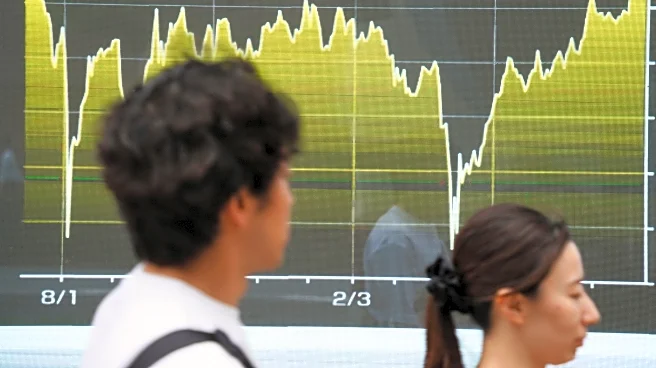Rapid Read • 8 min read
Global TV shipments have decreased by 2.1% year-on-year in the second quarter of 2025, as reported by Omdia's quarterly TV Sets Market Tracker. This decline marks the first year-on-year fall since the first quarter of 2024. The reduction in shipments is attributed to inventory rebalancing in mature markets such as Western Europe, North America, and Japan, which saw declines of 9.7%, 7.4%, and 4.5% respectively. Brands had previously increased shipments to these regions to preempt higher U.S. tariffs, and the current decline reflects the impact of that strategic decision. The slowdown in growth for major brands like TCL and Hisense further underscores the challenges faced globally, with intense price competition failing to stimulate consumer demand.
AD
The decline in TV shipments has significant implications for the global electronics market, particularly in mature regions like North America and Europe. The strategic shift by brands to target less mature markets such as the Middle East, Africa, and Asia & Oceania indicates a response to growing trade barriers and competitive pressures. This shift could lead to increased volatility in shipments if local demand in these regions does not keep pace. Additionally, the dip in the OLED market, despite being a high-value segment, suggests that heavy discounting and price competition are affecting even premium product categories. The ongoing inventory rebalancing and strategic market shifts highlight the complex dynamics of global trade and consumer electronics.
Brands are likely to continue targeting less mature markets to offset the challenges in North America and Europe. However, if local demand in these regions does not increase, it could lead to further volatility in shipments. The potential end of government-funded stimulus in China next year may also push significant volumes into international markets, increasing competition. Companies will need to navigate these shifts carefully to maintain market share and profitability. The industry may also see further price adjustments and strategic realignments as brands adapt to changing market conditions.
The strategic shifts in the TV market reflect broader trends in global trade and economic policy. The impact of tariffs and trade barriers is prompting companies to reconsider their market strategies and supply chain logistics. This could lead to long-term changes in how electronics are manufactured and distributed globally. Additionally, the focus on less mature markets may drive technological innovation and investment in these regions, potentially altering the global economic landscape.
AD
More Stories You Might Enjoy













